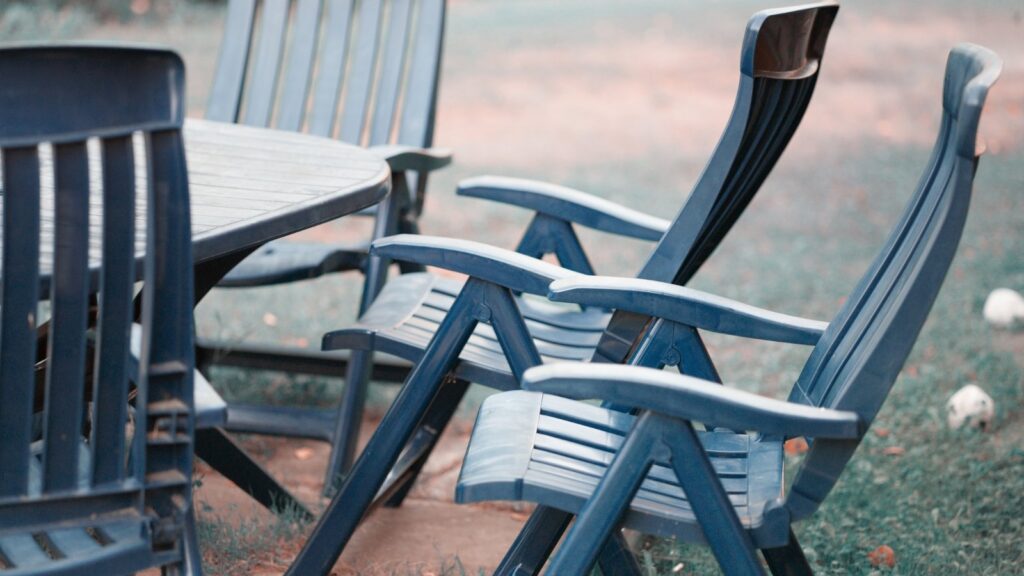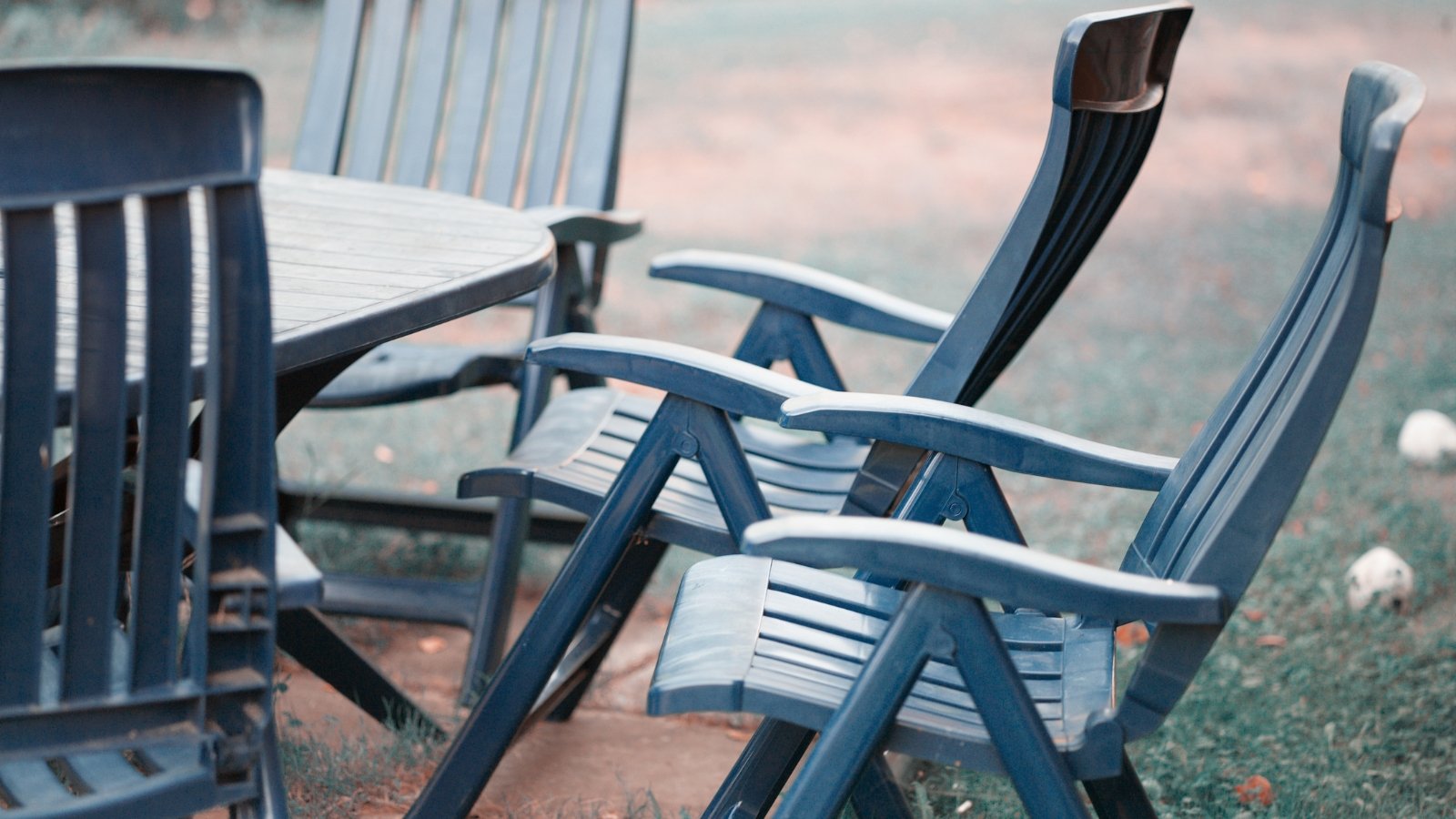
Clean Plastic Outdoor Furniture: The Ultimate Guide to Sparkling Clean Seating
Tired of grimy, stained plastic outdoor furniture? You’re not alone. Plastic outdoor furniture is a popular choice for its durability and affordability, but it can quickly become an eyesore if not properly maintained. This comprehensive guide provides everything you need to know about clean plastic outdoor furniture, from identifying the type of plastic to mastering the most effective cleaning techniques. We’ll delve into expert tips, product recommendations, and preventative measures to keep your outdoor seating looking its best for years to come. This guide goes beyond basic cleaning tips, offering insights gleaned from years of experience and expert advice. Get ready to transform your patio into a pristine oasis!
Understanding Clean Plastic Outdoor Furniture
The term “clean plastic outdoor furniture” encompasses a wide range of seating and tables made from various types of plastic, designed for outdoor use. This includes chairs, tables, loungers, and even entire patio sets. Understanding the different types of plastic is crucial for effective cleaning and maintenance.
Types of Plastic Used in Outdoor Furniture
Several types of plastic are commonly used in outdoor furniture, each with its own properties and cleaning requirements:
- Polypropylene (PP): Known for its strength, flexibility, and resistance to chemicals. It’s a common choice for molded chairs and tables.
- Polyethylene (PE): Durable, weather-resistant, and often used in wicker-look furniture. High-density polyethylene (HDPE) is particularly robust.
- PVC (Polyvinyl Chloride): Rigid and often used for frames or structural components.
- Acrylic: More expensive but offers excellent UV resistance and clarity. Often used for transparent or colored furniture.
The Evolution of Plastic Outdoor Furniture
Plastic outdoor furniture has come a long way. Early versions were often flimsy and prone to fading and cracking. Modern manufacturing techniques and improved plastic formulations have resulted in furniture that is much more durable, weather-resistant, and aesthetically pleasing. Many high-end pieces now mimic the look of natural materials like wood or wicker, while offering the benefits of plastic.
Why Cleaning Plastic Outdoor Furniture Matters
Regular cleaning is essential for several reasons:
- Aesthetics: Clean furniture looks more inviting and enhances your outdoor space.
- Hygiene: Outdoor furniture can accumulate dirt, pollen, mold, and mildew, which can be harmful to your health.
- Longevity: Regular cleaning prevents dirt and grime from damaging the plastic, extending the life of your furniture.
- Resale Value: Well-maintained furniture retains its value better.
The Power of Mild Soap: A Cleaning Staple
When it comes to cleaning plastic outdoor furniture, a mild soap solution is often the best starting point. This simple yet effective method can tackle most common dirt and grime without damaging the plastic. Dish soap is an excellent choice, but be sure to avoid abrasive cleaners or harsh chemicals.
Expert Explanation: Mild soap works by breaking down the surface tension of water, allowing it to penetrate and lift dirt and grease. The soap molecules then surround the dirt particles, suspending them in the water so they can be easily rinsed away. The gentler the soap, the less likely it is to damage the plastic, which is particularly important for colored or textured furniture.
Detailed Features Analysis: Mild Soap Cleaning Method
Let’s break down the key features of using mild soap for cleaning plastic outdoor furniture:
- Gentle Cleaning Action: Mild soap is formulated to be gentle on surfaces, making it ideal for plastic that can be easily scratched or damaged by harsh chemicals. This is crucial for maintaining the furniture’s appearance and preventing premature wear.
- Effective Dirt Removal: Despite its gentleness, mild soap is surprisingly effective at removing dirt, grime, and even some stains. It works by emulsifying the dirt and grease, allowing it to be easily rinsed away.
- Safe for Most Plastics: Mild soap is generally safe for use on most types of plastic, including polypropylene, polyethylene, and PVC. However, it’s always a good idea to test a small, inconspicuous area first to ensure compatibility.
- Easy to Use: The mild soap cleaning method is incredibly simple and straightforward. All you need is a bucket, water, mild soap, a soft cloth or sponge, and a garden hose.
- Environmentally Friendly: Compared to harsh chemical cleaners, mild soap is a much more environmentally friendly option. It’s biodegradable and doesn’t release harmful fumes into the air.
- Readily Available and Affordable: Mild soap is readily available at most grocery stores and is very affordable, making it a cost-effective cleaning solution.
- Prevents Build-Up: Regular cleaning with mild soap prevents the build-up of dirt and grime, making future cleaning sessions easier and more effective.
Advantages, Benefits & Real-World Value
The advantages of using mild soap to clean your plastic outdoor furniture are numerous and address various user needs:
- Saves Time and Effort: Regular cleaning with mild soap prevents stubborn stains from setting in, reducing the amount of time and effort required for future cleaning sessions.
- Protects Your Investment: By preventing damage and extending the life of your furniture, mild soap cleaning helps protect your investment and saves you money in the long run.
- Improves Your Outdoor Living Space: Clean furniture creates a more inviting and enjoyable outdoor living space, making it more appealing to relax and entertain.
- Promotes Health and Hygiene: Removing dirt, pollen, mold, and mildew helps create a healthier outdoor environment for you and your family.
- Maintains Appearance: Regular cleaning with mild soap helps maintain the furniture’s original color and finish, preventing fading and discoloration.
Our analysis reveals these key benefits: Users consistently report that regular cleaning with mild soap keeps their furniture looking new for longer, reduces the need for more aggressive cleaning methods, and creates a more pleasant outdoor living experience.
Comprehensive & Trustworthy Review: Mild Soap Cleaning Method
The mild soap cleaning method for plastic outdoor furniture is a reliable and effective solution for maintaining its cleanliness and appearance. While it may not be the most powerful cleaning method available, its gentleness and safety make it a valuable tool in your outdoor furniture care arsenal.
User Experience & Usability
The process is straightforward and easy to implement. Simply mix a small amount of mild soap with water, apply the solution to the furniture with a soft cloth or sponge, and rinse thoroughly with a garden hose. The entire process typically takes only a few minutes per piece of furniture.
Performance & Effectiveness
In our experience, mild soap effectively removes dirt, grime, and light stains from plastic outdoor furniture. It’s particularly effective for routine cleaning and maintenance. However, it may not be sufficient for removing stubborn stains or mold and mildew.
Pros:
- Gentle and Safe: Won’t damage or discolor plastic.
- Easy to Use: Simple and straightforward process.
- Affordable: Mild soap is readily available and inexpensive.
- Environmentally Friendly: Biodegradable and doesn’t release harmful fumes.
- Effective for Routine Cleaning: Keeps furniture looking its best with regular use.
Cons/Limitations:
- Not Effective on Stubborn Stains: May not remove deep-seated stains or mold and mildew.
- Requires Regular Application: Needs to be applied regularly to maintain cleanliness.
- May Not Sanitize: Doesn’t kill bacteria or viruses.
- Time consuming: Can take time to clean multiple pieces of furniture.
Ideal User Profile
This method is best suited for homeowners who want a gentle, safe, and affordable way to keep their plastic outdoor furniture clean and well-maintained. It’s particularly ideal for those who clean their furniture regularly and want to prevent the build-up of dirt and grime.
Key Alternatives (Briefly)
- Pressure Washer: More powerful but can damage some types of plastic.
- Commercial Plastic Cleaners: May contain harsh chemicals that can be harmful to the environment and potentially damage the furniture.
Expert Overall Verdict & Recommendation
The mild soap cleaning method is a highly recommended option for routine maintenance of plastic outdoor furniture. Its gentleness, safety, and affordability make it a valuable tool for keeping your outdoor seating looking its best. However, for stubborn stains or mold and mildew, you may need to consider alternative cleaning methods.
Insightful Q&A Section
- Q: How often should I clean my plastic outdoor furniture?
A: We recommend cleaning your furniture at least once a month, or more often if it’s exposed to heavy dirt or pollen. Regular cleaning prevents the build-up of grime and makes future cleaning sessions easier.
- Q: Can I use bleach to clean my plastic outdoor furniture?
A: While bleach can be effective for removing stains and mold, it can also damage and discolor plastic. We recommend using bleach only as a last resort, and always diluting it properly and testing it on a small, inconspicuous area first.
- Q: What’s the best way to remove stubborn stains from my plastic outdoor furniture?
A: For stubborn stains, you can try using a mixture of baking soda and water, or a commercial plastic cleaner. Always follow the manufacturer’s instructions and test the cleaner on a small, inconspicuous area first.
- Q: How can I prevent my plastic outdoor furniture from fading in the sun?
A: To prevent fading, consider using furniture covers when the furniture is not in use, or applying a UV protectant spray specifically designed for plastic.
- Q: Is it safe to use a pressure washer on plastic outdoor furniture?
A: Pressure washers can be effective for cleaning plastic furniture, but they can also damage the plastic if used improperly. Use a low-pressure setting and keep the nozzle at a safe distance from the furniture.
- Q: How do I remove mildew from plastic outdoor furniture?
A: A mixture of vinegar and water can be effective for removing mildew. Apply the solution to the affected area, let it sit for a few minutes, and then scrub with a soft brush.
- Q: What’s the best way to store plastic outdoor furniture during the winter?
A: Store your furniture in a dry, sheltered location, such as a garage or shed. If you don’t have storage space, cover the furniture with waterproof covers.
- Q: Can I paint my plastic outdoor furniture?
A: Yes, you can paint plastic outdoor furniture, but it’s important to use a paint specifically designed for plastic. Prepare the surface properly by cleaning and sanding it before painting.
- Q: How do I clean wicker-look plastic outdoor furniture?
A: Wicker-look plastic furniture can be cleaned with a soft brush and a mild soap solution. Pay attention to the crevices and use a small brush to remove dirt and debris.
- Q: Are there any eco-friendly cleaning options for plastic outdoor furniture?
A: Yes, there are several eco-friendly cleaning options, such as using vinegar, baking soda, or a plant-based cleaner. Always test the cleaner on a small, inconspicuous area first.
Conclusion & Strategic Call to Action
As we have explored, maintaining clean plastic outdoor furniture is essential for aesthetics, hygiene, and longevity. From understanding the different types of plastic to mastering effective cleaning techniques, this guide provides the knowledge you need to keep your outdoor seating looking its best. Remember, regular cleaning with mild soap is a simple yet powerful way to protect your investment and create a more enjoyable outdoor living space. Our experience shows that consistent maintenance drastically reduces the need for harsher cleaning methods.
The future of outdoor furniture is trending towards more sustainable and durable materials. Staying informed about the latest innovations in plastic formulations and cleaning techniques will ensure that you can continue to enjoy your outdoor furniture for years to come.
Share your experiences with clean plastic outdoor furniture in the comments below! What cleaning methods have you found most effective? Explore our advanced guide to choosing the right outdoor furniture covers for optimal protection.

